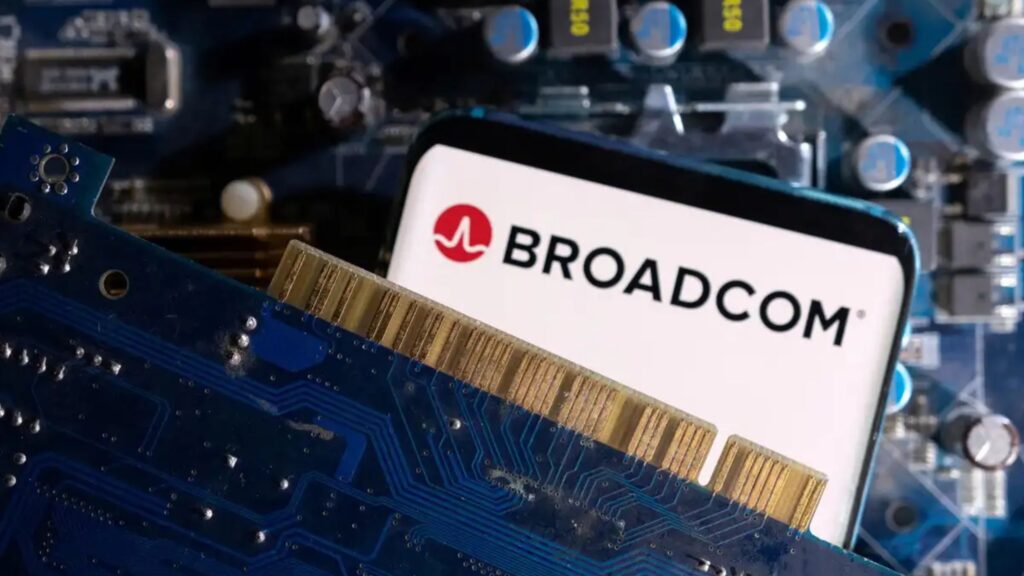Broadcom has introduced a new high-performance networking chip, the Tomahawk Ultra, aimed at improving data movement between AI chips inside data centers. The launch marks a direct challenge to Nvidia’s dominance in AI infrastructure, particularly in connecting large-scale AI systems.
What Happened
- Broadcom unveiled the Tomahawk Ultra, a next-generation networking processor designed to handle the intense data traffic generated by artificial intelligence workloads.
- The chip is now shipping and is being manufactured by TSMC (Taiwan Semiconductor Manufacturing) using its advanced 5-nanometer process.
Why It Happened
- AI systems rely on hundreds of chips working in tandem, requiring high-speed connections to share data efficiently.
- Traditional networking setups are insufficient for this scale, prompting the need for specialized processors that can manage “scale-up” computing within tight physical proximity (such as within a server rack).
- Broadcom initially designed this chip for high-performance computing, but shifted its focus to AI as generative AI demand surged.
Why It Mattered
- The Tomahawk Ultra is intended to rival Nvidia’s NVLink Switch, a key component of Nvidia’s data center dominance.
- According to Broadcom, the new chip can connect four times as many chips as Nvidia’s alternative.
- Importantly, it uses an enhanced version of Ethernet, rather than a proprietary protocol, offering more open and scalable integration.
Strategic Implications
- Broadcom already works with Google, helping produce AI chips seen as one of the few credible alternatives to Nvidia’s GPUs.
- By strengthening its networking capabilities, Broadcom is positioning itself as a more complete AI infrastructure provider.
- The move intensifies the competition in the AI hardware space, where Nvidia currently holds a significant edge.
Technology & Features
- Purpose: Acts as a data traffic controller for AI chips placed in close proximity.
- Scalability: Supports significantly more chip interconnections than competitors.
- Protocol: Uses a speed-optimized Ethernet rather than proprietary technologies, aiding compatibility and reducing vendor lock-in.
- Development Time: The chip took three years to design and was repurposed for AI as the market shifted.
ConclusionBroadcom’s launch of the Tomahawk Ultra signals its growing ambitions in the AI space, aiming to challenge Nvidia not just in computing power but also in the critical networking backbone needed to support large AI models. As AI infrastructure demands continue to rise, solutions like the Tomahawk Ultra could play a key role in shaping next-generation data centers.
